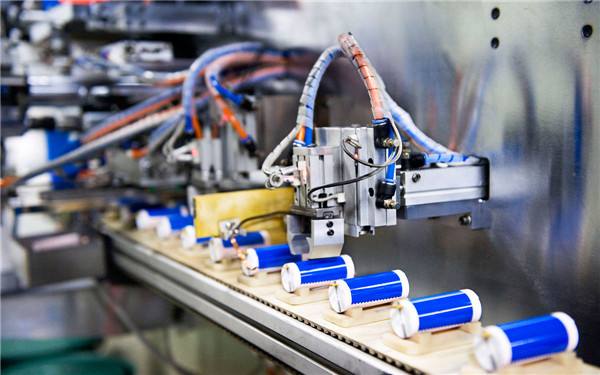Lithium Battery Passivation
Oct 22, 2019 Pageview:3092
What is the passivation of lithium batteries?
Passivation is a phenomenon that affects lithium batteries. In general, passivation is a thin layer film of Lithium Chloride (LiCl) that forms on the surface of the lithium anode. Lithium Chloride is a high resistance film layer between the electrodes. This film serves as a protection to the lithium anode from discharging on its own when the load is removed outside the cell. This film of Lithium Chloride is the reason why lithium batteries have a long shelf life, which can be over a span of ten years.
Passivation may cause a delay in voltage when a load is placed on the cell.
What are the characteristics of lithium battery passivation?
Passivation has unique characteristics in lithium batteries. Scientists have studied these characteristics and divided them into four aspects.
· Passivation layer induced polarization.
· Long term, low discharge rates.
· Chemistry of the lithium passivation layer.
· Kinetics of the passivation layer growth.
When studying Polarization, it was shown that an initial polarization (the delay in voltage) was followed by another "secondary" polarization in some cases.
Studying the effects of long term, low discharge rates on the lithium battery, it was discovered that law discharge rates changed the lithium passivation layer. This change resulted in an increased lithium corrosion rate, thus decreasing the cell capacity.
It was also noted that the degradation was much greater the higher the temperature got.
Studying the chemistry and kinetics of the lithium passivation layers showed some distinctive results. It was noted that a thin layer was formed first "primary layer", which is responsible for the passivation. Another thicker porous layer was formed later on in the first layer. This secondary layer was formed due to the partial discharge. It resulted from the precipitation of the Lithium corrosion products. It was found to contain compounds like Li2S2O4, Li2S2O5, and Li2SnO6, where n is always greater than two.
The first "primary" layer is responsible for the initial voltage delay in the cell (polarization) under load. While the second porous layer is responsible for inducing a second polarization that inhibits the high rate discharge.
When a load is placed on a cell, the passivation layer which is high resistance causes the cell's voltage to drop. discharge reaction slowly works on removing this passivation layer, and by doing that the internal resistance of the cell is lowered. This process causes the cell's voltage to reach a new desired peak value that remains constant if no other changes occur.
When the load is removed, the passivation layer is once again formed.
Beware that high loads on lithium cells can cause the voltage delay to increase thus increasing passivation.
Generally speaking, passivation does not affect most users of lithium batteries. However, there are certain aspects where passivation can cause problems or even be fatal. That is why consulting the battery's manufacturer is always the best thing to do.
What are the effects of lithium battery passivation?
Passivation is important in Lithium batteries. Without it, lithium batteries cannot be stored. That is because the lithium chloride produced on the surface is very compact, which prevents further the reaction of lithium and thionyl chloride. This act makes the self-discharge inside the battery very minimum. This way, the shelf life of the lithium battery can be over a span of ten years. To summarize the previous, passivation can protect the battery capacity while protecting the battery from capacity loss.
There are also some undesired effects for the passivation like:
· When you try to use a lithium battery that has been stored for some time, the initial working voltage of the battery will be low. Moreover, it will take some time for that voltage to reach the required value. This phenomenon is called "voltage passivation".
· Passivation does not affect applications where no big change of the current is required. However, for application that requires big changes or accidental changes to the current, passivation is a fatal defect in that system.
· Passivation can cause big capacity loss and reducing the utilization rate of the battery if not used for over 6 months. That is why using the battery every three to six months keeps it usable and makes the utilization rate reaches up to 90%.
The passivation layer formed in the lithium batteries can be kept at minimum by applying either continuous low current or periodically high current discharge while the battery is stored. However, this process will shorten the expected shelf life of the battery.
For applications that require the batteries to be stored for a long time, like a weapon system and communication system. In these cases the battery can be activated every six months, that way; voltage passivation can be solved.
For Lithium Thionyl Chloride batteries, passivation occurs in them when stored. For these kinds of batteries, they must be activated before usage "depassivation process".
Depassivation process must follow the following:
Loading for depassivation must be two times of the working current.
The time of depassivation depends on the time the battery is stored:
· 15 seconds for a battery that is stored for three months.
· 30 seconds for a battery that is stored for six months.
60 seconds for a battery that is stored for twelve months.
- Prev Article: Analysis of Lithium Ion Battery Cell Types
- Next Article: Lithium Battery Research Development
Leave Message
Hottest Categories
-
Hottest Industry News
-
Latest Industry News











